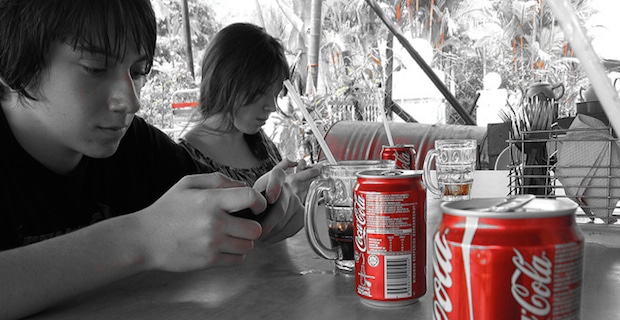
Has Coca-Cola gone too far?
At a time when public sentiment on soft drinks is at an all-time low and obesity rates continue to rise, the global beverage giant is attempting to woo consumers with the introduction of the Coca-Cola “Freestyle:” a 146-flavor, make-your-own soda dispenser.
The dispenser allows ambitious thirst-quenchers to toy with a digital touch-screen to add a variety of sugary flavors to any of its popular beverages, including Coca-Cola, Sprite, Fanta, Seagrams, Dr. Pepper, and Dasani, among others. (Imagine peach-flavored Sprite and orange-spiked Coke Zero.)
Their shiny target for the new high-tech gadget: young, tech-hungry Millennials.
According to data, the teen market has been the fuel behind the $76 billion soft drink industry, which is on a seven-year decline.
Because it is no easy feat to seduce this discerning and fickle demographic, Coca-Cola has created a model for what it hopes is the formula for adoption: lure teens with the cool, sleek curves of a fast car and mobile technology, of course.
Coca-Cola has called on the genius of Pininfarina Studios-the Italian dream team behind the styling of the Ferrari and Maserati-to design the Freestyle soda dispenser. The company has also launched an iPhone app to appeal to youth’s fixation with mobile gaming, by allowing them to mix-and-match their favorite soft drink concoctions and save them for their next visit. Right now the gaming functionality is purely for entertainment, but the app will be enhanced in the fall to give users the ease of holding up their phone to a Freestyle machine, thereby prompting it to make these pre-programmed beverages. (Reports show that kids between the ages 12 to 17 spend an average of seven hours per week on mobile gaming activity.)Read: The New Coca-Cola Machine
The rollout of the Freestyle only further puts Coca-Cola in the hot seat among parents and consumer health advocates. While soda consumption has become synonymous with the rise in obesity and diabetes, recent studies have also begun to draw links between soft drinks and teen and child behavioral problems. In 2013, a study published in the Journal of Pediatrics revealed that children who drank soda were more likely to experience withdrawal, difficulty paying attention, and aggressive behavior toward other children. Another study reported that teens who consumed high amounts of soda were more likely to carry a weapon or have suicidal thoughts.
Adding salt to the fire, a Change.org petition started by a Mississippi teen last year targeted Coca-Cola for its use of brominated vegetable oil (BVO), a flame retardant, in its line of beverages. After increased consumer pressure, the company made the recent announcement that it would remove the ingredient, but insisted that its soft drinks and beverages are “safe.”
Read more about brominated vegetable oil
Still, reports and studies of ingredients found in Coca-Cola products, and soft drinks made by other popular beverage makers, increasingly prove that they are anything but. Synthetic dyes and colors, high-fructose corn syrup, artificial sweeteners like aspartame and acesulfame potassium, and preservatives like sodium benzoate are just a snapshot of the potentially harmful ingredients in the can. These additives-all of which sit on Naturally Savvy's Scary Seven list of ingredients to avoid-have been linked to a myriad of health issues, including hyperactivity, DNA damage, neurotoxicity, heart disease, liver failure, dementia, and cancer.
Image: Catriona Ward




